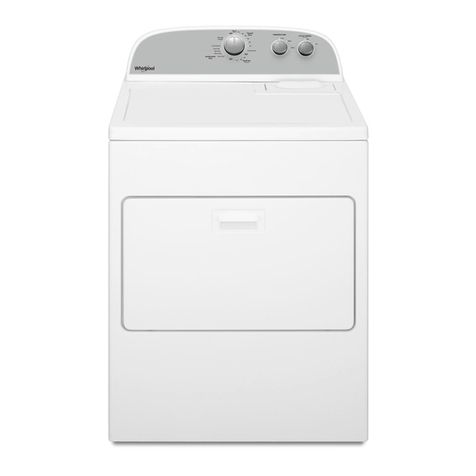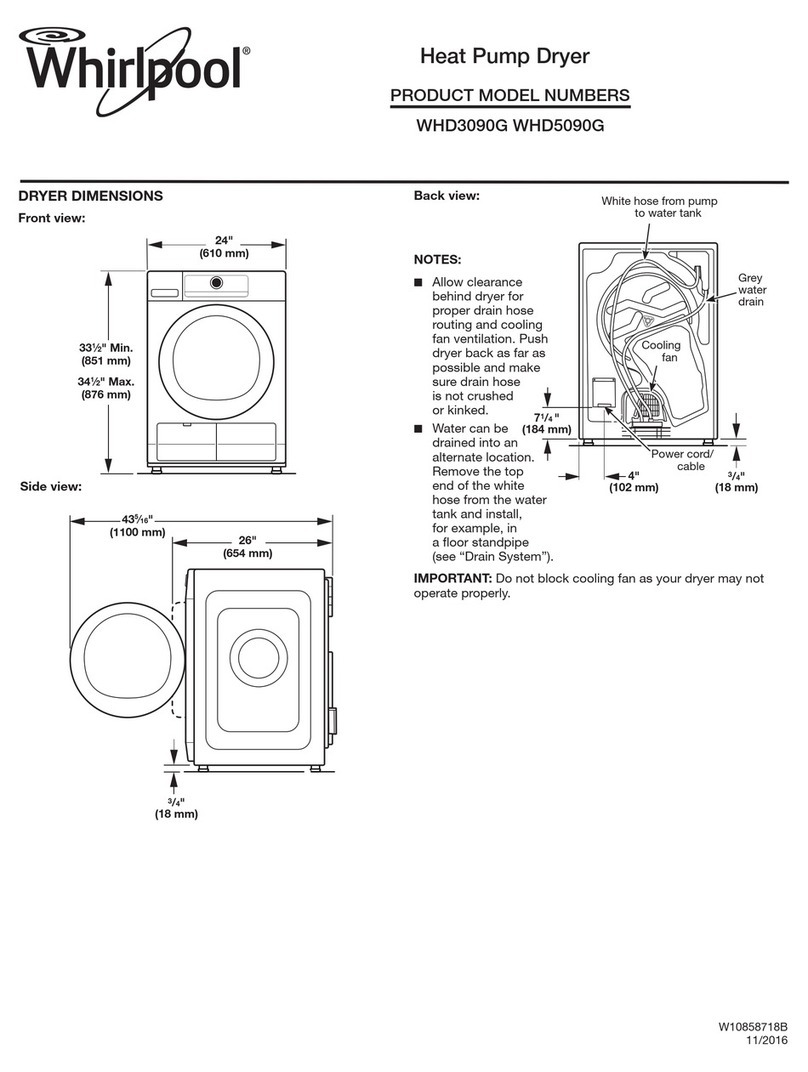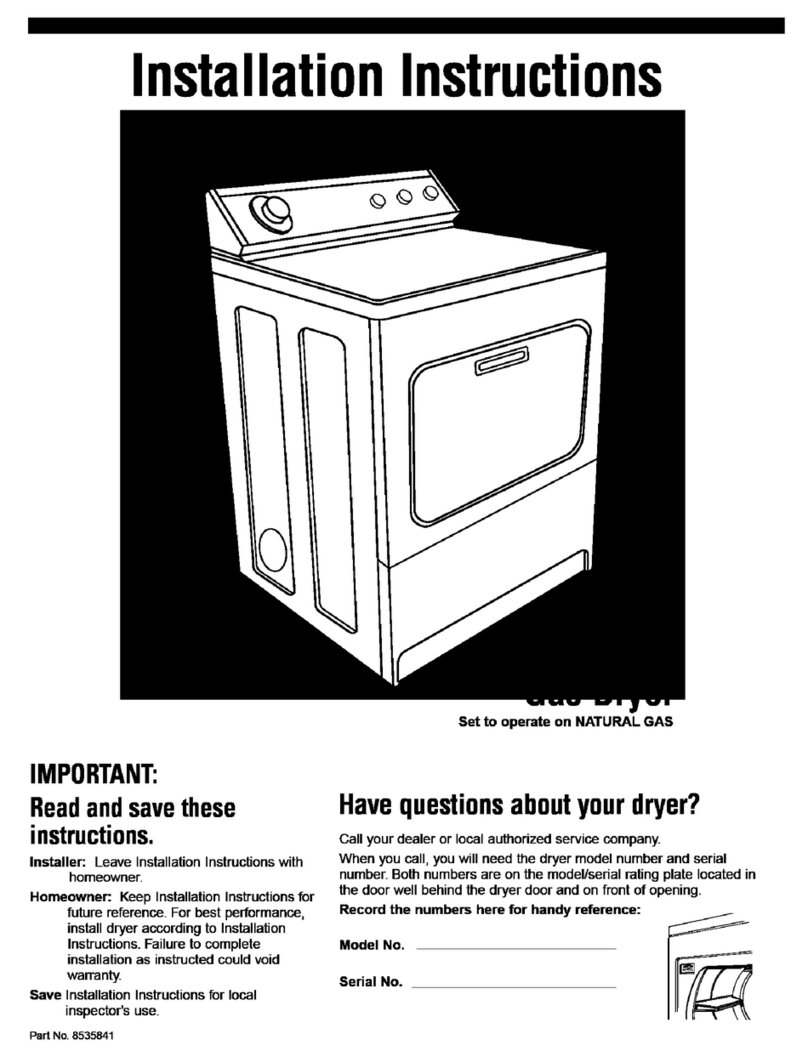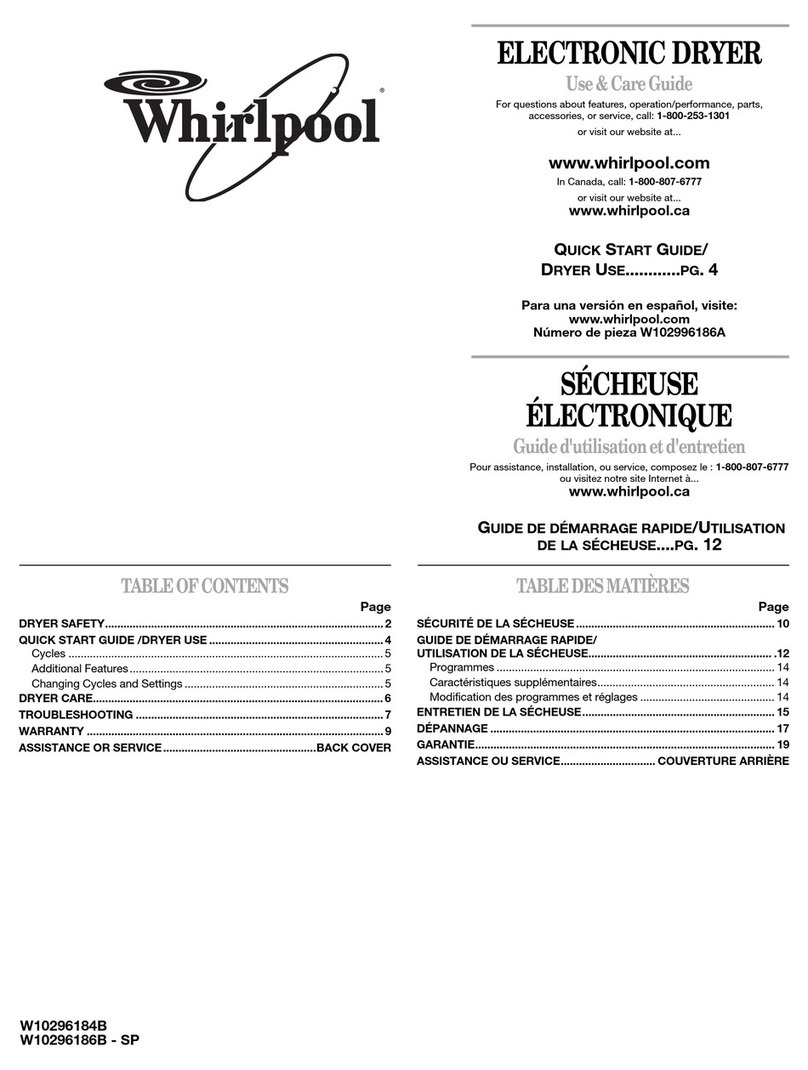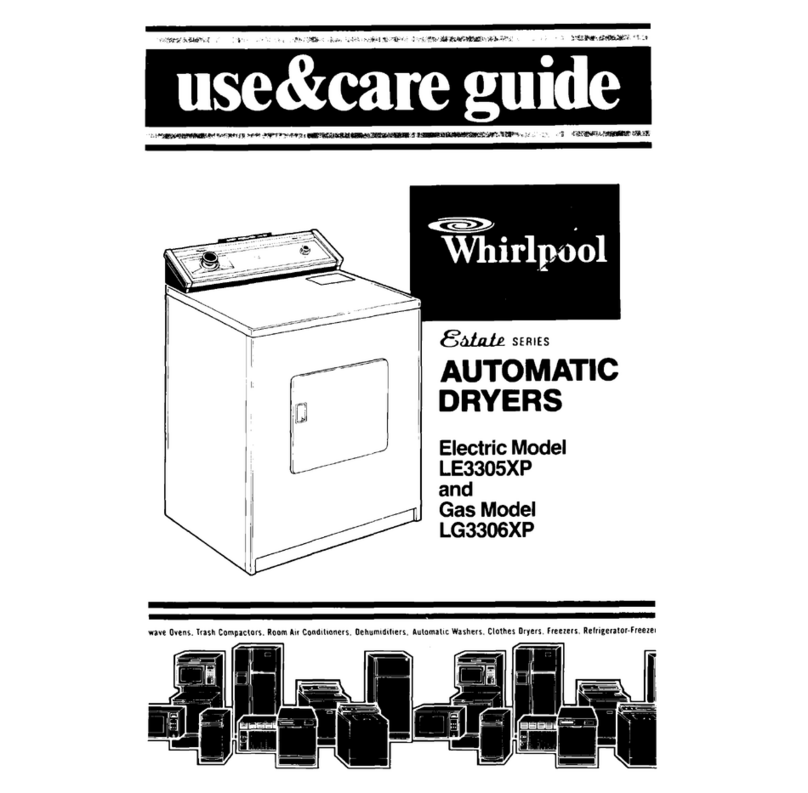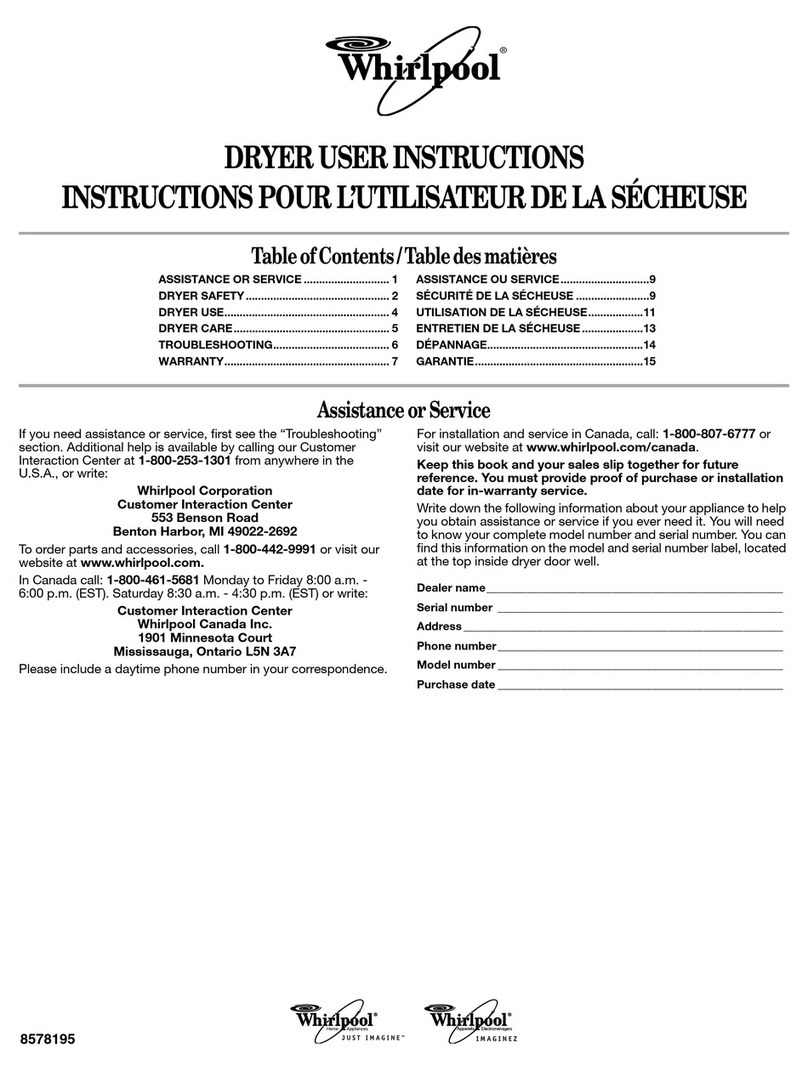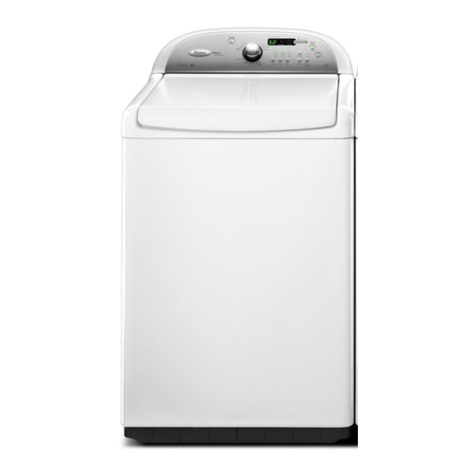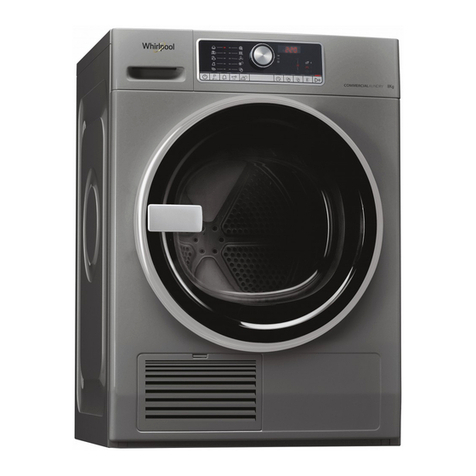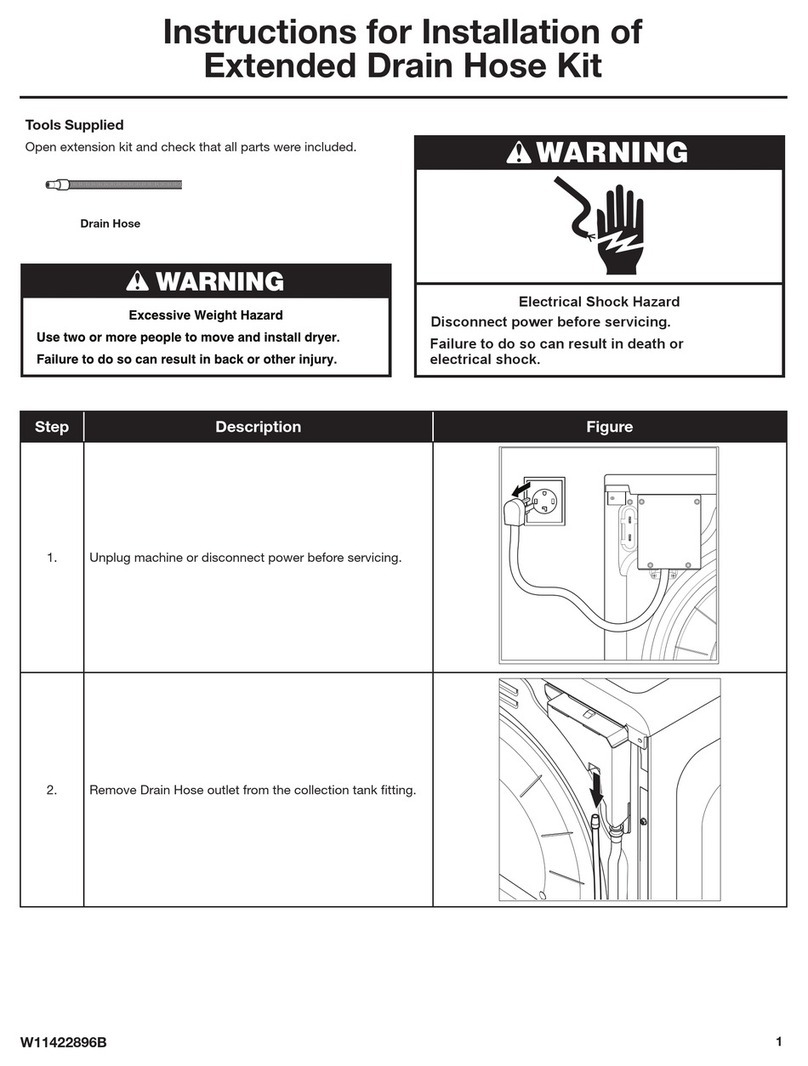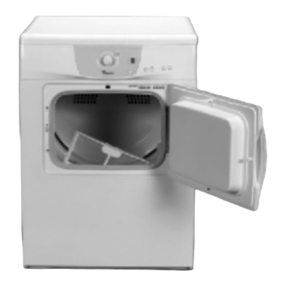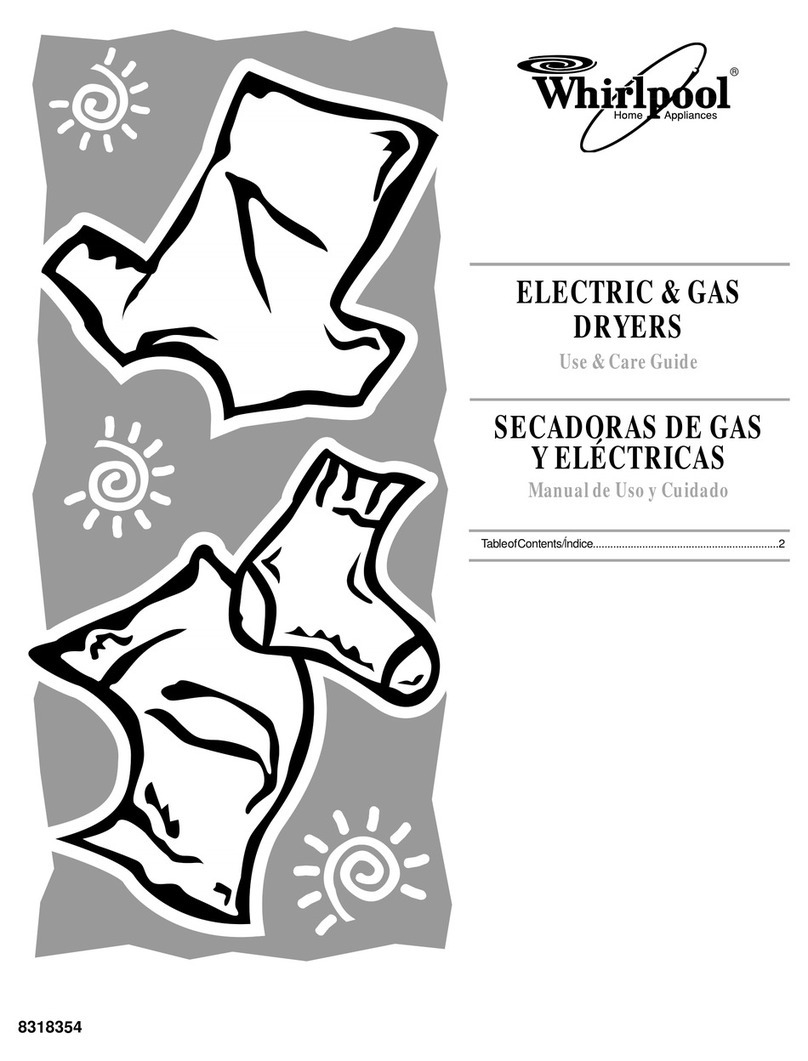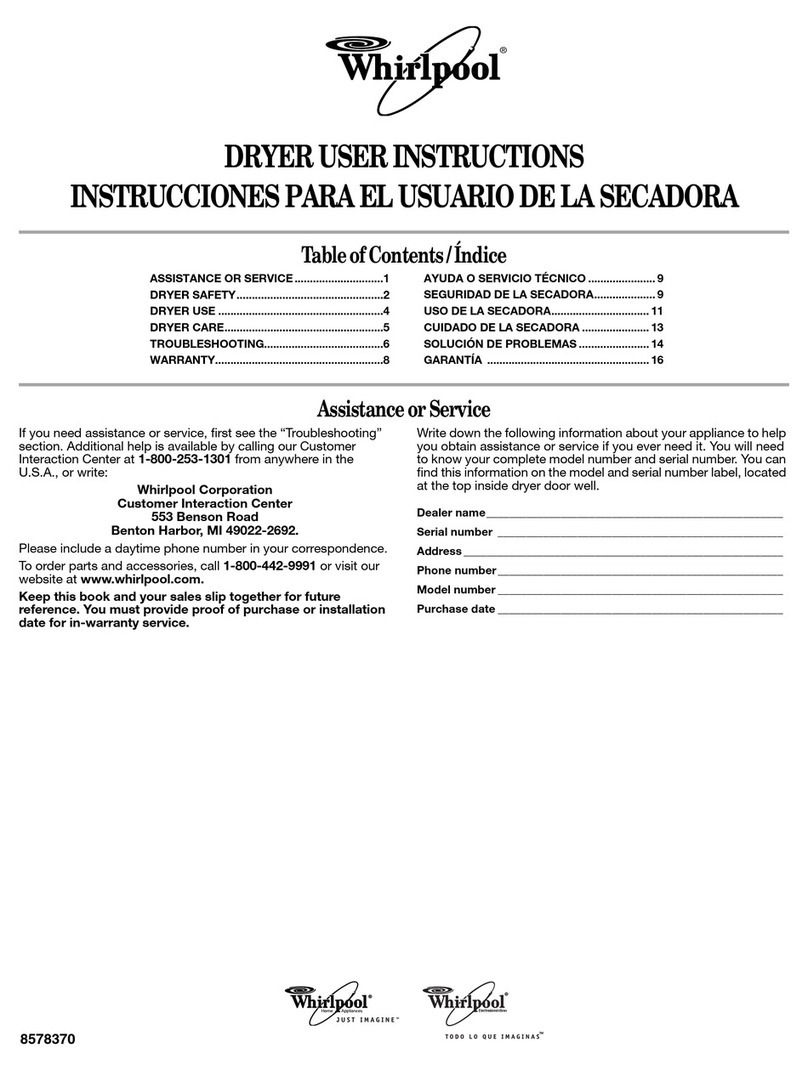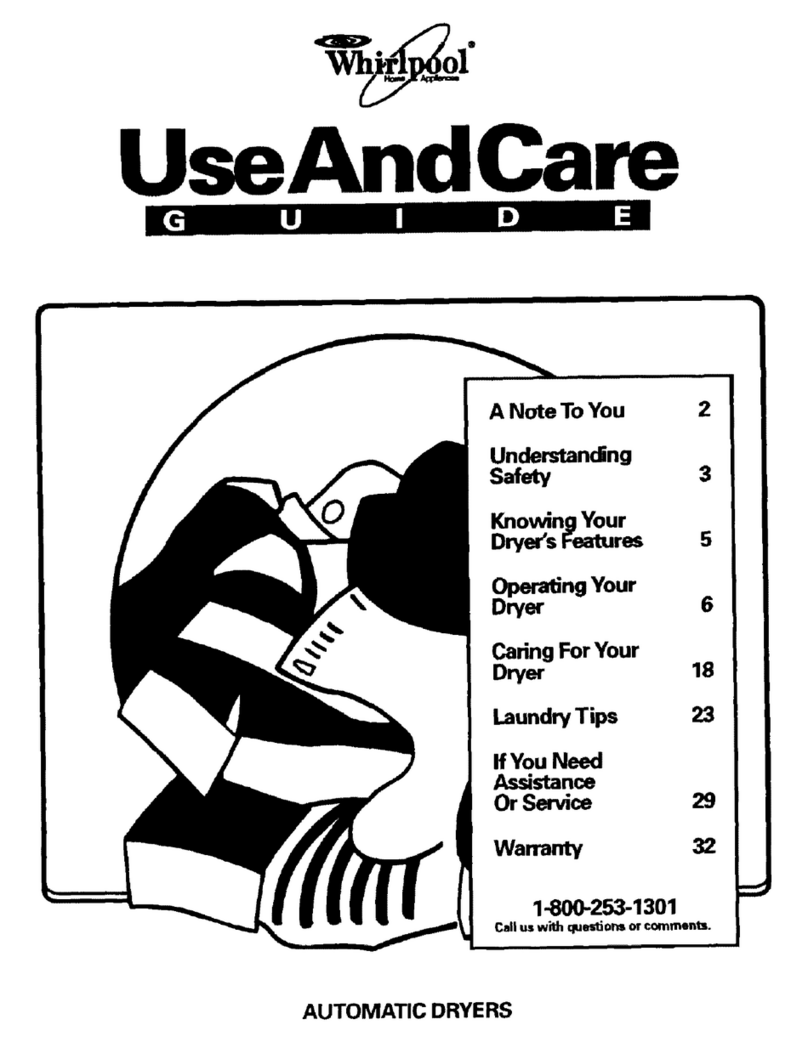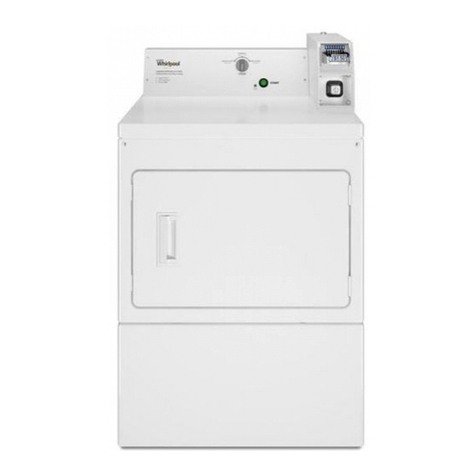Electrical
requirements
Observe all governing Codes
and Ordinances.
1 A two wire, single phase, 220 Volt,
50 Hz, AC only, electrical power
supply is required on a separately
fused 15 Ampere circuit. [Time
delay fuse or circuit breaker is
recommended.)
2. An adequate electrical ground is
required within 4 feet of the
appliance location when using the
grounding wire supplied.
3. THEDRYERMUSTBECONNECTED
TOCOPPERWIREONLY.Aluminum
wire must not be used to avoid
potentially unsatisfactory
connections.
4. Local codes may permit the use
of a flexible type electrical power
supply cord (pigtail). A suitable
strain relief must be provided at the
point the power supply cord enters
the appliance.
5. The appliance may be connected
directly to the fused disconnect (or
circuit breaker) box through flexible
armored or non-metallic sheathed
cable. Allow two or three feet of
slack in the line between the wall
and the appliance so that it may
be moved if servicing is ever
necessary A suitable strain relief
must be provided at each end of
the electrical power supply cable
(at the appliance and at the
junction box). Wire sizes and
connections must conform with
the rating of the appliance
(15Amperes). DO NOT use an
extension cord.
Electrkaf
Connection
220 Volt - Single Phase -
2-Wire Connection
Electrical ground is required on
this appliance.
This appliance is manufactured with
the neutral terminal NOT connected
to the frame.
CONNECT GROUND
TO FUSED DIS- n
WIRE TO APPROVED
CONNECT BOX
OR APPROVED
WIRING DEVICE
FOR POWER
/ (15AMPERES)
Connect the power supply cord
as follows:
1.
Remove the terminal block cover
2. Connect the two wires of the power
supply cord to the outer terminals of
the terminal block. See Figure 1.
For connecting plain-end field wire,
see Figure 2,
3. Replace terminal block cover
NOTE: Plain-end fieid wires must be
fastened between the terminals of
the terminal block and the nuts of the
terminal block screws as shown in
CONNECT GROUND #ii n
Figure 2
POWER SUPPLY (
(WITH STRAIN RE
(15AMPERES)
WIRE TO APPROVED
GROUND
4. Connect a separate copper’
grounding wire (No. 10 minimum] to
a grounded cold water pipe* by
means of a clamp and then to the
frame of the appliance at the
external grounding connector Use
Part No. 685463 grounding wire and
clamp assembly. Do not ground to
a gas supply pipe. Do not connect
PANEL
B
the power supply cord to electric
power supply until appliance is
permanently grounded.
must have metal contfnuiy
to electrical ground and not be
Figure 3
Metrupted by plastlc, rubber or other
electrically nsulatlng connectors (fncludlng
water meter or pump] wIthout addlng a
jumper we at these connectlam
Exhaust
requirements
WARNING:
Metal
flexible duct may be used.
Non-metallic flexible duct is
not
recommended since it is a potential
fire hazard.
For Safety:
Do not exhaust dryer into a chimney,
furnace cold air duct, attic or crawl
space, or any other duct used for
venting. Accumulated lint could
become a fire hazard or moisture
could cause damage.
Clean the exhaust system
periodically, at least every 2 years.
Never install flexible duct
concealed in walls,
ceiling or under flooring.
Four Inch Metal Exhaust
Duct
is recommended.
(Do
not
use 3-inch exhaust due
Use Duct Tape
to seal all joints.
Exhausting the dryer outside
is
recommended. If you cannot exhaust
the dryer to the outside, use Exhaust
Deflector Kit LCK4000 available from
your Whirlpool dealer
of the dryer back.
The
Exhaust Duct
can be routed
up, down, left, right or straight out
the back of the dryer.
Metal Flexible Duct
must be
fully extended and supported
when the dryer is in its final
position. DO NOT KINK OR
CRUSH THEDUCT
An Exhaust Hood
should cap the
exhaust duct to prevent exhausted air
returning into dryer The outlet of the
hood must be at least 12 inches from the
ground or anything else that may be
in the path of the exhaust.
A 2% inch outlet Exhaust Hood
should
be used with short systems only. [This
outlet creates greater back pressure
than other hood types.)
Exhaust Hoods
with magnetic latches
should
not
be used.
The
Maximum Length
of the exhaust
system depends upon the type of duct
used, number of elbows and type of
exhaust hood. The maximum length for
both rigid and flexible duct isshown
in chart.
EXHAUST HOOD TYPE I
Exhaust Systems
longer than specified
will:
l
Shorten the life of the dryer.
l
Reduce the performance in ways
such as causing longer drying times
and increasing the use of energy.
l
Accumulate lint.
For
Exhaust Systems
not covered by
the exhaust length chart, see Whirlpool
Service Manual, Exhausting Whirlpool
Dryers, Part No. 603197 available from
your Whirlpool parts distributor The
back pressure in any exhaust system
used must not exceed .6 inches of water
column measured with an inclined
manometer at the point that the exhaust
system connects to the dryer
There are
Exhaust Kits
available that
allow you to direct filtered exhaust air
inside to conserve energy during winter
months. Whirlpool has a Heat-Humidity
Saver Part No. 279427 which can be
used with Whirlpool dryers providing
their use does not violate national
or local codes. If you use one of these
kits, be aware that excessive moisture
in the home can cause many
problems and that you may see an
increase in the time required to dry
a load. Also, you must regularly clean
the filter to avoid excessive lint
build-up which can affect the dryer’s
performance.
NOTE:Do not
use this kit on a dryer
installed in a bedroom, bathroom, or
closet.
RecessedArea
Instructions
INSTRUCTIONSFORRECESSEDOR
CLOSETINSTALLATIONS
The following installation spacings
and door air openings for the dryer
are possible when installed and
exhausted as noted. [Spacing as
indicated is in inches and is minimum
allowable. For ease of installation and
service, additional spacing should
be considered.)
TO PREVENTLARGEAMOUNTS
OF LINTAND MOISTUREFROM
ACCUMULATING AND TO MAINTAIN
DRYING EFFICIENCY,THISMACHINE
MUSTBEEXHAUSTEDOUTDOORS.
MINIMUM INSTALLATIONSPACING
RECESS INSTALLATION A B C ‘r E
NON-EXHAUSTED (DEFLECTOR . O O 4 -
LCK4000 REQUIRED)
EXHAUSTED
Unobstructed air openings required for laundry
equipment when door is installed.
*Shelf or cabinet is not permitted above dryer
when non-exhausted
**Louvered door with equivalent air openings
is acceptable.
***“D” Dimension must be measured from dryer
cabinet rear panel.
Companion appliance spacings
should be considered.
Detailed space requirements can be
found on the label located on the
back panel of dryer
NOTE: No other fuel burning appliance
may be installed in the same closet.
